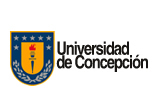News
During January 21 - 25, 2019, the sixth version of WONAPDE will take place
.jpg) A first level conference in the field of Numerical Analysis of Partial Differential Equations (PDEs) will be held in Concepción during January 21 - 25, 2019. The Workshop on Numerical Analysis of Partial Differential Equations, WONAPDE, is a triennial meeting, organized by the Center for Research in Mathematical Engineering (CI²MA) of the University of Concepción, and has acquired in its five previous versions a high international prestige for the quality of the talks, speakers and topics addressed. The objective of this workshop is to present recent developments in numerical analysis of partial differential equations, including topics such as computational methods in electromagnetism, fluid mechanics, solid mechanics, and, in general, applications in engineering and life sciences, among others.
A first level conference in the field of Numerical Analysis of Partial Differential Equations (PDEs) will be held in Concepción during January 21 - 25, 2019. The Workshop on Numerical Analysis of Partial Differential Equations, WONAPDE, is a triennial meeting, organized by the Center for Research in Mathematical Engineering (CI²MA) of the University of Concepción, and has acquired in its five previous versions a high international prestige for the quality of the talks, speakers and topics addressed. The objective of this workshop is to present recent developments in numerical analysis of partial differential equations, including topics such as computational methods in electromagnetism, fluid mechanics, solid mechanics, and, in general, applications in engineering and life sciences, among others.
Dr. Manuel Solano, CI²MA researcher and academician of the Department of Mathematical Engineering, chairs the WONAPDE Organizing Committee and highlights how far this meeting has advanced since its inception. “This workshop started in 2004 and its main promoter has been, from the beginning, Dr. Gabriel Gatica, director of CI²MA. It is remarkable the growth that has taken place in the organization, thanks to the experience gained in the five previous versions," he says. The call for national and international high-level academicians attending WONAPDE is possible thanks to the wide network that the members of CI²MA have been able to form, and to the renowned quality of their research, as the Centre is well positioned thanks to the productivity of its researchers. The other members of the Organizing Committee, also researchers of CI²MA, are Raimund Bürger, Leonardo Figueroa, Gabriel Gatica and Ricardo Oyarzua.
For this version there are already more than 200 researchers enrolled, says Dr. Solano, most of them prominent international researchers who will meet in an average of 15 mini symposia on specific topics. “This is important for us, too, because then our students can see what is being done worldwide in this area. Every year new mathematical methods are developed and, thanks to this kind of conferences, it is possible to update oneself in the discipline and establish networks," he says.
Numerical simulation
Dr. Solano is a specialist in numerical analysis and finite element methods, among other subjects. His most recent work includes computational simulation for the development of solar cells. “With the computer I can graph a cell and simulate what its electromagnetic field will look like. I don't need to build it to know how it's going to behave. A cell has several geometric parameters; it is composed of several layers of different materials. It is therefore necessary to know, for example, how thick the layers should be. Instead of building them and testing them with more or less thickness, one varies those parameters in the computer. To do this, you study the mathematics behind it, develop a computational method and an algorithm to create a program in which you click ´Enter´ and get an answer. Of course, in that process where you press ´Enter´, there are a lot of things behind, in particular algorithmic complexity and a lot of calculations in play. A simulation can take hours, days. Then we have to develop methods and algorithms that allow us to obtain simulations, hopefully, in real time," he explains.
This is a challenge in several disciplines and one of the topics that will be analyzed in WONAPDE. “One of the speakers coming to the Workshop, Randall Leveque from the University of Washington, USA, will talk about tsunami modeling, which is interesting because when there is a tsunami, one needs to know immediately where the wave is going to go. We can't wait several days. These simulations really take time because the amount of data to be analyzed is such that we may not even be able to store them in a standard computer, because of the enormous amount of equations and information they provide. It's millions of equations that work. That takes quite some time. That's why efforts are being made to develop methods that are much quicker to deliver a simulation," says Dr. Solano. Numerical simulations are behind many of the technological developments that we see around, even in surprising places as is in the case of Pixar's animated films where, when a girl jumps, the movement of her hair is done through numerical simulations. Especially in the characters that go in the main frames.
This topic of Numerical Simulation and Mathematical Modeling will be one of those addressed in the WONAPDE to be held during January 21 - 25 at the UdeC.

